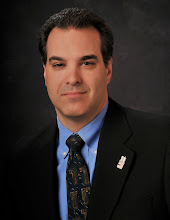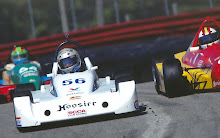
Two of the top five reasons I didn’t vote for President Obama were expectations that he would take an extremely liberal approach to:
• national security
• foreign relations
Recent events in Iran are providing President Obama one of his first high-profile opportunities to demonstrate his approach to foreign relations and national security. Unfortunately, his response thus far is confirming my worst fears.
Soon after taking office in January, President Obama commented, "if countries like Iran are willing to unclench their fists, they will find an extended hand from us".
Like most Republicans and conservatives, I did not disagree with this comment. If fact, we hold the very same hope, that Iran’s current leadership will recognize the error of their ways, soften their stern grimace to the world, embrace human rights and democratic freedoms, accept Israeli sovereignty, relinquish their uranium enrichment program or open it up to full inspection/validation of energy production, and stop arming Hezbollah and Hamas.
Republicans, Democrats, Liberals, Conservatives all want the very same thing . . world peace and freedom for all. So, obviously, the difference is in their beliefs and approach to how the “leader of the free world” should work towards these ends.
History is extremely clear on the record of dictators, tyrants, fascists, and oppressors. They pursue their own deluded beliefs and self-interests, often at the expense of their own people. They can not be negotiated out of these beliefs. They do not respond to diplomacy. They lie, cheat, steal, and murder to further their own agenda, in complete disregard to their own people’s wishes and the rest of the world alike.
How can anyone believe that today’s tyrants will act differently, especially those that have already demonstrated the same patterns for decades?
Throughout the entire George W. Bush administration, Tehran made promise after promise to Secretary of State, Collin Powell and President Bush. They committed to temporary suspensions of uranium enrichment, to honor the Nuclear Nonproliferation Treaty, and to open their nuclear program to inspections.
Based on history’s lessons, I simply never believed any of it . . and true to history, Tehran never meant any of it.
On March 19th President Obama released a “Nowruz Message” to Tehran and the Iranian people. In it he made the following statements:
• "This process will not be advanced by threats. We seek instead engagement that is honest and grounded in mutual respect."
• "The United States wants the Islamic Republic of Iran to take its rightful place in the community of nations. You have that right - but it comes with real responsibilities."
Once again, this was a very eloquent proclamation of what every American and most other countries and citizens of the world want. President Obama’s initiative to open a dialogue and extend a “firm” hand is understandable and his renewal of US Sanctions against Iran just days before this message release was almost universally supported.
However, Tehran’s response to President Obama’s “extended hand” was provided to the world press by Ali Akbar Javanfekr, senior advisor to Iranian President Mahmoud Ahmadinejad. In his response he stated:
• “the US had to recognize its past mistakes if it wanted to engage Iran”
• "By fundamentally changing its behavior America can offer us a friendly hand”
• “What is the new administration actually offering, that George Bush didn't?“
Does this response offer any signs that Tehran is willing to engage in open and honest dialogue in working towards a diplomatic solution that would involve their cessation of:
• Nuclear program/technology development?
• Arming Hezbollah and Hamas?
• Ending human rights violations?
• Accepting Israeli sovereignty?
OPPORTUNITY TO LEAD THE FREE WORLD
The stage was now set for the coming showdown of freedom vs. tyranny!
Could it have been any more obvious that the June 12, 2009 Iranian presidential elections would not be fair?
I literally laughed out loud as I watched pre-election interviews of Mahmoud Ahmadinejad speaking proudly of the democratic presidential election process in Iran and his commitment to it. Conversely, I felt the building anguish of reform candidate Mir Hossein Mousavi as he released his carefully crafted, optimistic messages to the Iranian people and the world with muted concerns for the post-election future of Iran, should Ahmadinejad “win”.
The election day allegations of irregularities and fraud were immediate. The landslide victory of Mahmoud Ahmadinejad is in stark contrast to all polls and statistically valid predictive measures taken prior to the election..
Immediate protests erupted, most non-violent, some not so much. Tehran Police and Ahmadinejad supporters engaged immediately and with force. Protests quickly became riots, including violence, destruction, injuries, and death.
If President Mahmoud Ahmadinejad was truly committed to the democratic election process, why were they not open to neutral Iranian and international observers?
NOW was the time for the “Leader of the Free World to lead!” . . . to insist President Ahmadinejad accept the international community’s (not the US alone) assistance with investigations into election irregularities and ensuring a truly free and transparent election process be provided for the Iranian people. This was an opportunity to truly stand-up for the Iranian people and for freedom and democracy all over the world.
Unfortunately, as is usually the case with a liberal foreign policy approach, President Obama did not lead the free world on this occasion. Instead, he once again made a simple public declaration of what he, all Americans, and free nations and people around the world believe. You can watch it here . . . http://beltwayblips.dailyradar.com/video/president_obama_s_statement_on_iranian_presidential/
President Obama did not seize the opportunity to stand with the people of Iran and the free world to stare down tyranny and oppression.
Again, history has proven that liberal foreign diplomacy with dictators does not work. Successful diplomacy with oppressors only happens when the price of failed diplomacy is severe and believed by the tyrant. With the obvious perfect example of this having been played out on the world stage so recently by President Ronald Reagan, I am completely befuddled as to why our current sitting president prefers to ignore history’s lessons and believe he will be the first in history to reform global bullies by simply preaching goodness.
Surely John McCain, George W. Bush, George H.W. Bush, or Ronald Reagan would have taken more action than releasing yet another soliloquy.
What is the conservative foreign policy difference? Diplomacy backed-up by real consequences. There can be no doubt in the minds of the world’s dictators and tyrants that the “Leader of the Free World” will act when that moment in history arrives.
Well, that moment just arrived, and passed by President Obama, spurring him into the only action he seems capable of . . pontification of the obvious.
I can only hope that the Iranian people are better students of history than President Obama. History shows the way to freedom through true “leaders of the free world”, like Mahatma Gandhi and Martin Luther King Jr. . . with or without the current sitting American President at your side.




